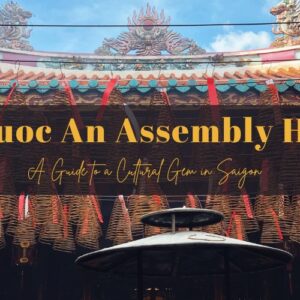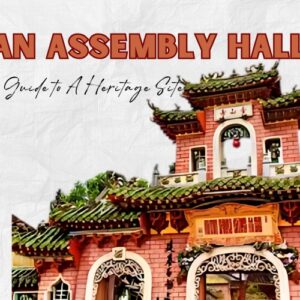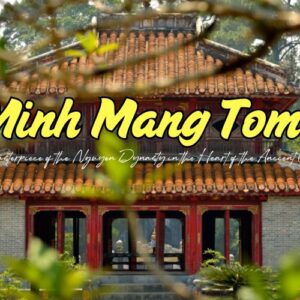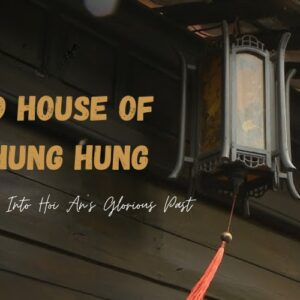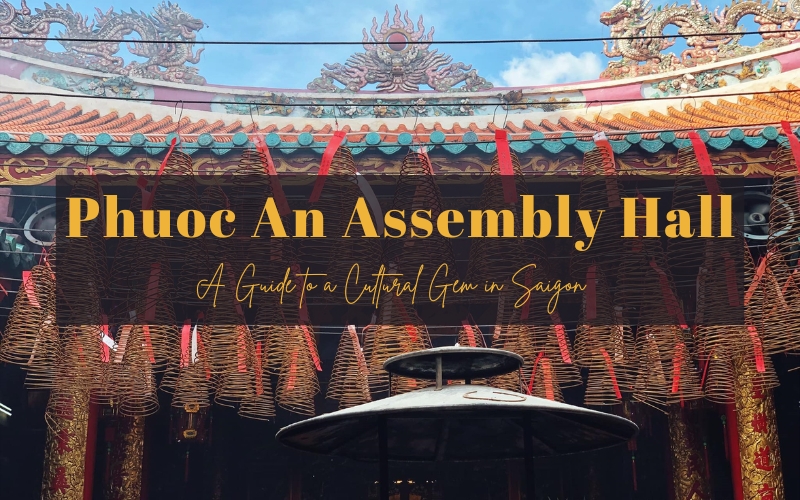
Phuoc An Assembly Hall is a hidden gem in District 5, Ho Chi Minh City, that combines history, spirituality,, and traditional Chinese architecture. This guide will give you everything you need to know before you visit. Explore this remarkable site and discover why it remains an essential cultural and spiritual destination in Ho Chi Minh City.
General information about Phuoc An Assembly Hall
Address: 184 Hong Bang, District 5, Ho Chi Minh City
Opening hours: 7 AM – 5 PM
Entrance fee: free
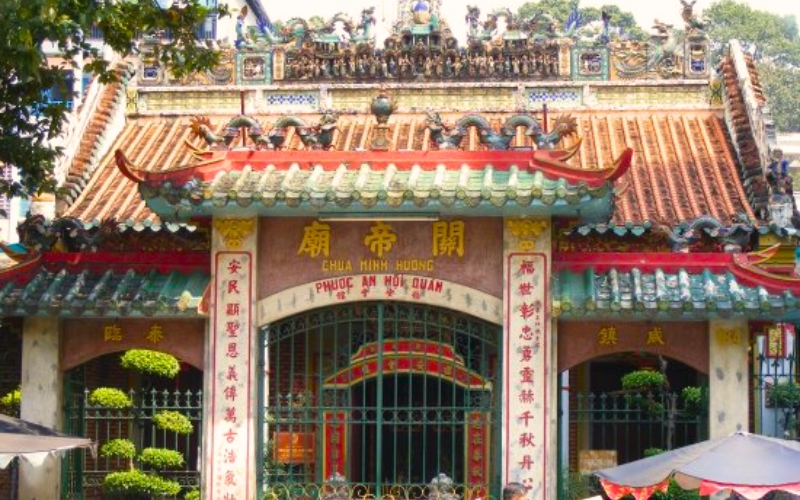
Phuoc An Assembly Hall
Phuoc An Assembly Hall (also known as Minh Huong Pagoda, Ong Quan De Pagoda) appears as a quiet space in the middle of the busiest commercial area of the city. Coming here, you will feel the quiet, peaceful space in the heart of the bustling and noisy city.
Phuoc An Assembly Hall has a campus of nearly 1,000m2 with the main works located along the vertical axis, including the main hall in the North, the front hall in the South and the central hall in the middle. Although it was built later than other assembly halls in Cho Lon, Phuoc An Assembly Hall is still not inferior in terms of architectural value, and decorative arts, especially wood carving art.
In terms of beliefs, this place is just one of many Ong temples (worshipping Quan Thanh De Quan) in Ho Chi Minh City. Although not the largest, the sacredness of the assembly hall has been famous far and wide for many years. In 2009, Phuoc An Assembly Hall was ranked as a city-level architectural and artistic relic.
>>> After exploring the rich history and stunning architecture of Phuoc An Assembly Hall, let’s embark on our Ho Chi Minh City tours that showcase its vibrant culture, cuisine, and iconic landmarks.
History of Phuoc An Assembly Hall
Before 1902, the location of Phuoc An Assembly Hall today was the old foundation of the ancient An Hoa Temple. Later, this temple was restored and rebuilt by the Chinese from the three provinces of Guangdong, Fujian, and Zhejiang (China) living in the Cho Lon area and named Minh Huong Pagoda, and also established Phuoc An Assembly Hall right in the pagoda. This hall has become a gathering place for the Chinese-Vietnamese community, especially those of Fujian origin. It is both a place of worship and a cultural center, reflecting the rich heritage of its founders.
Architecturally, Phuoc An Assembly Hall displays traditional Chinese design elements, including exquisite wood carvings, ornate altars, and colorful decorations. The hall is dedicated to several deities, with prominent altars honoring Guanyin (Goddess of Mercy) and Guan Yu (God of War), both revered figures in Chinese culture.
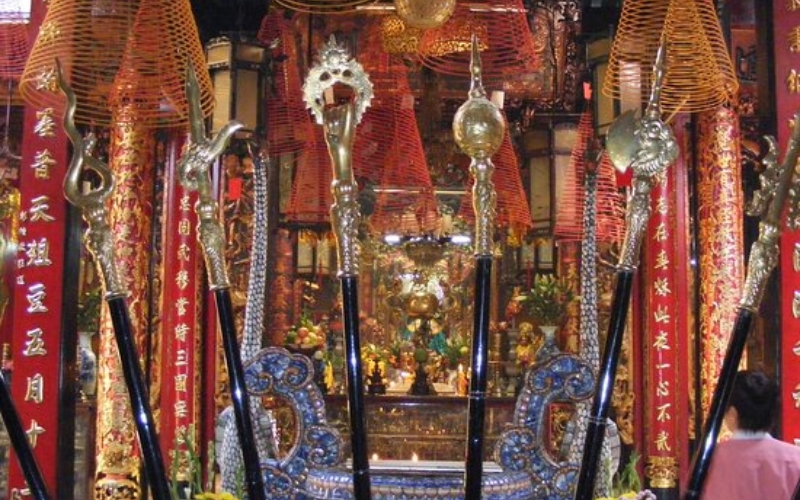
Inside Phuoc An Assembly Hall
Architectural highlights of Phuoc An Assembly Hall
Tam Quan Gate
When arriving here, visitors can see two lines of Vietnamese characters at the temple gate, Minh Huong Pagoda and Phuoc An Assembly Hall. This is one of the outstanding architectural features of the assembly hall, known as Tam Quan Gate or the entrance with 3 doors. The gate roof is decorated with elaborate carvings of dragons, phoenixes and lucky symbols, which are believed to bring protection and prosperity.
The gate is mainly painted in red and yellow, colors that symbolize luck, wealth and fortune in Chinese beliefs. On both sides of the entrance are guardian statues, which are effective in warding off evil spirits and ensuring that only those with good intentions are allowed to enter. This grand entrance not only serves a spiritual purpose but also helps visitors learn more about the artistic and cultural depth of the assembly hall.
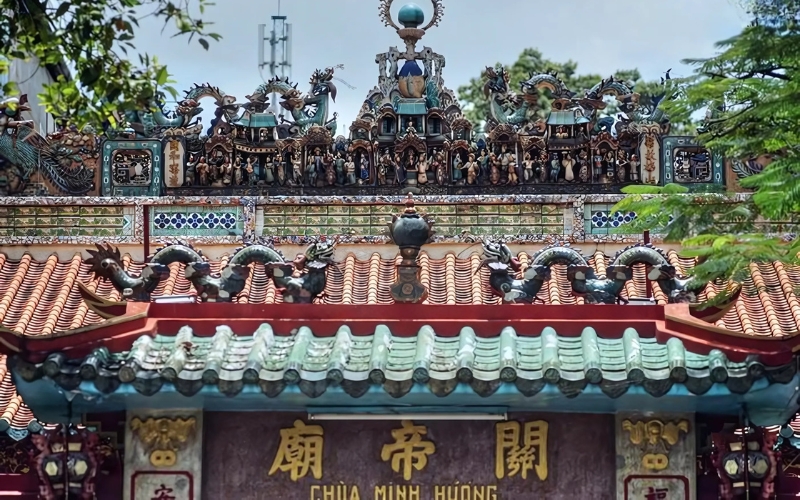
Tam Quan Gate
The main hall
The hall is mainly made of ceramic and wood, with a small ceramic relief model on top of the pagoda. In the center of the temple is the altar of Quan Thanh De, next to the statues of the Five Elements and Ong Bon Dia. The altar is gilded, with sophisticated carvings and ancient calligraphy creating a sacred space.
The hall also preserves many ancient artifacts such as ironwood statues dating back over 300 years, incense burners, stone lions, bronze decorations and furniture such as tables, chairs, and beds from the Qing Dynasty. The pillars and beams are delicately carved with dragon images, and traditional patterns symbolizing power and longevity. Surrounding them are horizontal lacquered boards and calligraphic parallel sentences conveying messages about virtue, filial piety and the philosophy of life.
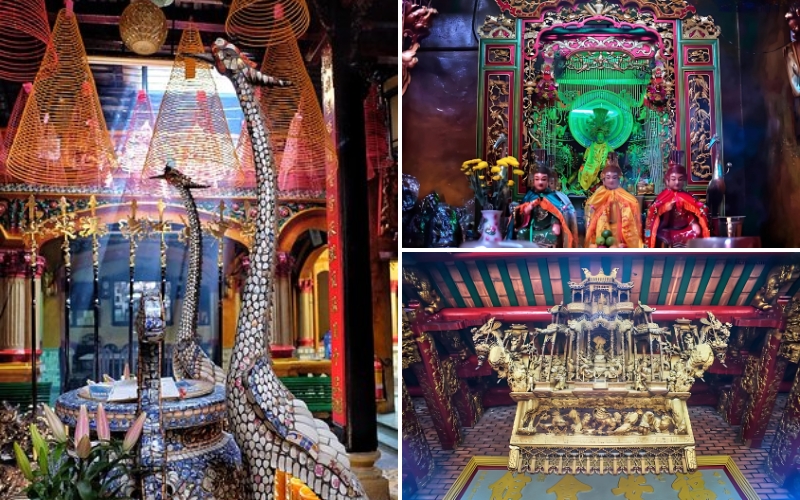
Inside the main hall
Temple grounds
Behind the main temple is the inner courtyard, an open space designed in traditional Chinese style, harmoniously combining nature and architecture. Standing out in the middle is a large incense burner, where pilgrims offer offerings and pray. Above are hundreds of large red conical crossbars that are very beautiful and fragrant. The red incense sticks hanging over people’s heads give off a golden light, creating a magical and peaceful feeling.
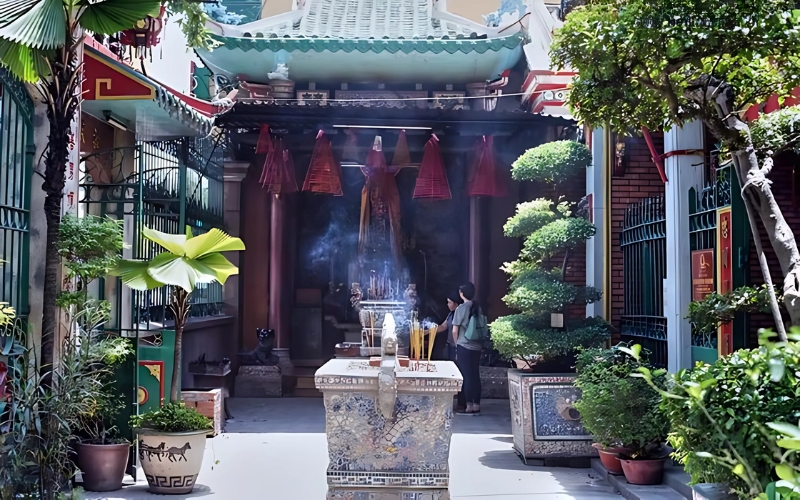
The inner courtyard
Special events and festivals at Phuoc An Assembly Hall
Lunar New Year
During the Lunar New Year, Phuoc An Assembly Hall becomes an important spiritual destination for the Chinese community in District 5, Ho Chi Minh City. Right from New Year’s Eve, people and believers come to burn incense, pray for peace, and ask for luck at the beginning of the year to hope for a peaceful and prosperous new year. The assembly hall organizes many traditional rituals such as offering prayers for peace, asking for fortunes at the beginning of the year, lion and dragon dances, etc., creating a bustling festival atmosphere, and helping people and visitors immerse themselves in the beauty of traditional culture during the New Year.
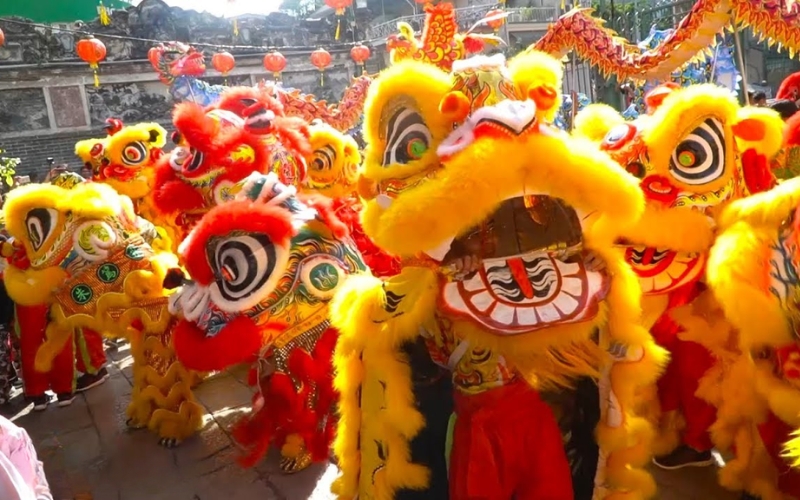
Lion dance at Lunar New Year
Quan Thanh De Quan Festival
Quan Thanh De Quan, also known as Quan Cong, is a god symbolizing loyalty and integrity, widely respected in Chinese beliefs. On the 13th day of the first lunar month every year, the assembly hall solemnly organizes the Quan Thanh De Quan festival. On this occasion, many traditional rituals are performed, including burning incense, making offerings, and other cultural activities. The festival attracts a large number of people and tourists to attend, showing their respect and praying for protection from the deity.
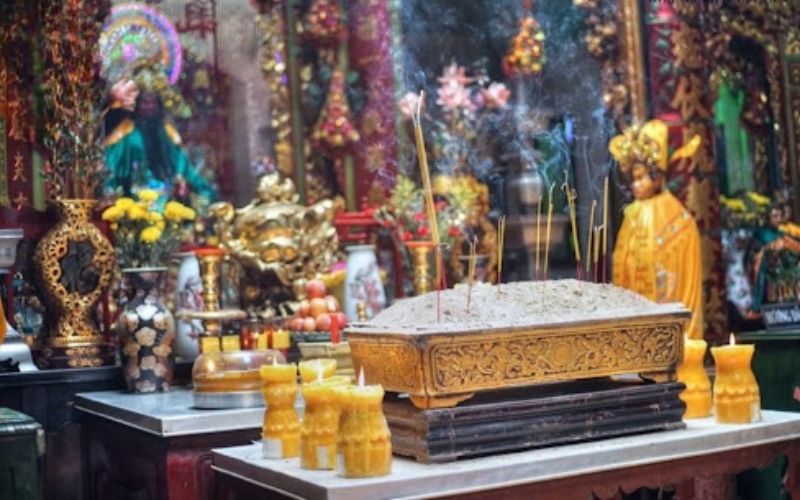
The altar of Quan Thanh De Quan at the hall
Lantern Festival
This is one of the most important festivals of the temple, held on the 15th day of the first lunar month. This is an occasion for people to give thanks, pray for peace, luck and dispel bad luck in the new year.
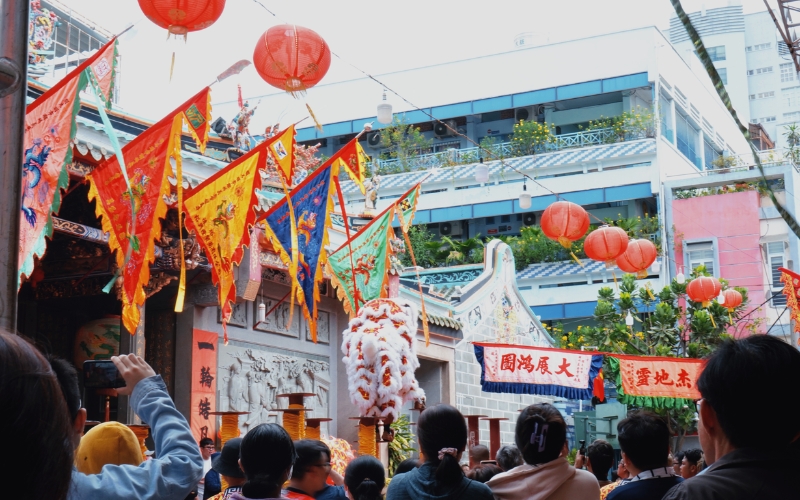
Lantern festival at Phuoc An Assembly Hall
>>> Beyond the spiritual charm of Phuoc An Assembly Hall, Ho Chi Minh City comes alive with vibrant festivals throughout the year. Here are the top 9 festivals you won’t want to miss!
Quan Am Festival
Phuoc An temple also worships Quan Am Bodhisattva, symbolizing compassion and saving the suffering. Every year, Quan Am festival is held on 3 days: February 4, June 19 and September 14 of the lunar calendar. During these days, believers come to burn incense, pray and participate in religious rituals to pray for peace and happiness.
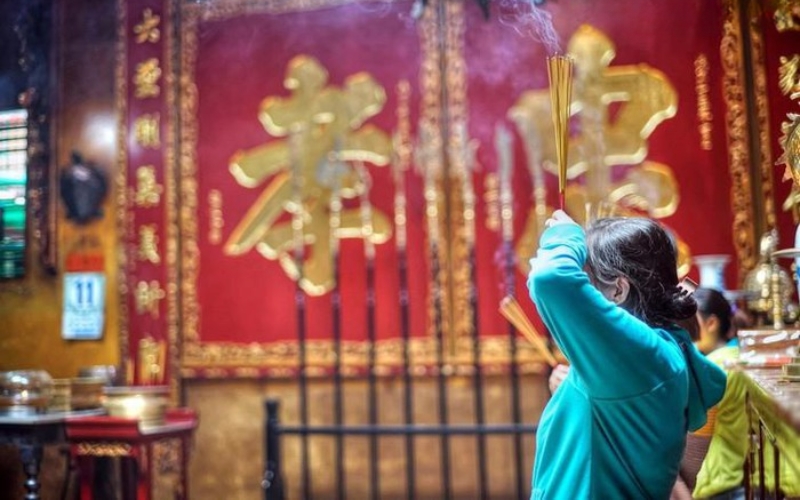
People come to pray for luck, health and happiness at Quan Am Festival
Tips when visiting Phuoc An Assembly Hall
Phuoc An Assembly Hall is not only a spiritual destination but also a place to preserve the cultural beauty of the Chinese community in Ho Chi Minh City. Here are some useful tips for visitors to show respect for their beliefs and have the most complete experience.
- If you want to experience a quiet space, come early in the morning or early afternoon. If you go on major holidays such as the Lunar New Year or the Lantern Festival, be prepared to wait and be quite crowded.
- Because this is a spiritual and worshiping place, visitors need to wear polite and discreet clothes and remove hats and sunglasses when entering the main hall.
- Behave properly in the assembly hall: keep order, and do not talk or laugh too loudly. Also, do not touch the statues, bowls or ancient artifacts in the assembly hall. You can take pictures but should not use flash or stand too close to the statues because it is considered disrespectful.
- The Assembly Hall is located in the heart of District 5, Cho Lon area has many other spiritual and cultural places such as Jade Emperor Pagoda, Ha Chuong Assembly Hall and other famous places. Combine your visit with other places and explore the famous Chinese food streets.
Phuoc An Assembly Hall is not only a place of worship but also a historical and cultural treasure reflecting the long-standing heritage of the Chinese community in Ho Chi Minh City. And if you have the opportunity to visit Saigon, do not miss this famous, sacred and mysterious temple! Hopefully, this article will help you on your next visit.
Read more:

